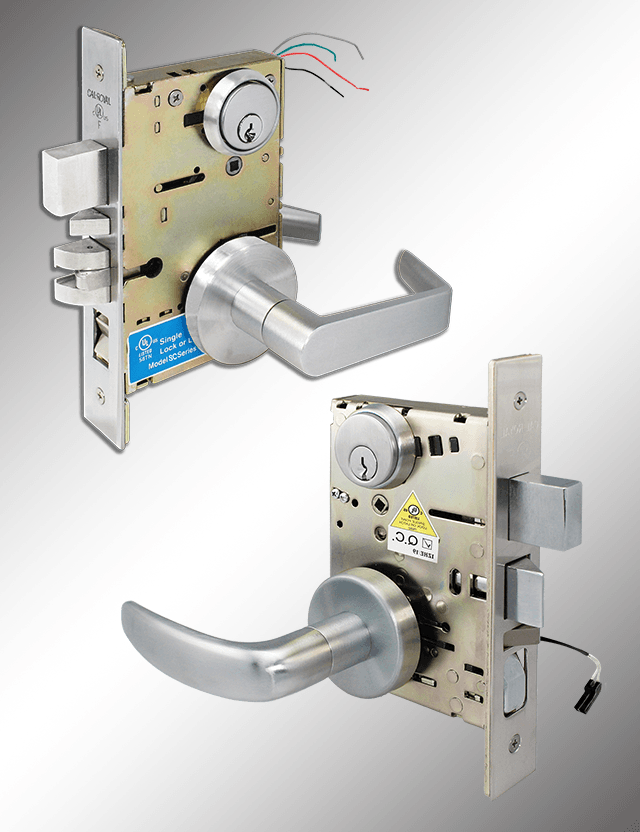Commercial Hardware
Cylindrical Locks vs Mortise Locks
Cylindrical vs Mortise, their uses and how they affect handling
When categorizing a commercial lever, you are using the lock body inside the door as a reference. These commercial door handles vary greatly but usually all fall into these 2 categories:
Cylindrical Lockets
A cylindrical lockset is the most commonly used lock set in commercial construction, installed in doors with a cross bore and latch bolt edge prep. Also known as a 161 prep by door manufactures, most of these locks come in 4-6 pieces, unless they are combined with a push button or electronic access control locking mechanism. These lock sets are typically reversible by simply switching the interior and exterior lever parts and turning the latch bolt in the other direction. The handing of the lock sets are either right hand or left hand. But, because of the type of boar in the door, they are a weaker lock than a mortised designed handle. They come in different Grades;
“Most hardware devices are tested to meet multiple minimum criteria, and depending on the levels met, grades are applied. Grade 1 is the best-performing device passing the highest minimum standards, grade 2 is the next, and grade 3 is the lowest quality of the three.”
[su_column] [/su_column]Excerpt From: Scott Tobias. “Illustrated Guide to Door Hardware: Design,Specification, Selection.”
[/su_column]Excerpt From: Scott Tobias. “Illustrated Guide to Door Hardware: Design,Specification, Selection.”
And as an installer this effects your installation of these devices.
Grade 1, UL listed (Fire Rated) 4 bolt only- Commercial Lever
Grade 2, UL listed (Fire Rated) with 4 bolt installation only,
not Rated with 2 bolt installation– Commercial or Residential Lever
Grade 3, Residential Lever 2 Bolt
Mortised Lockset
A mortise lock or box lock is a more complex and secure design for securing a door. This is why most state and local government buildings, municipalities, and colleges use them. They offer a more long-lasting design and have a large number of options to accommodate most every situation. Understanding a mortise lock is a bit harder because they are more complex. They have 4 different handing’s, right hand, left hand, right hand reverse and left-hand reverse. These extra two handing’s are used to accommodate the location of the keyed mortise cylinder. The mortise cylinder is the keyed locking device on mortise locks. Mortise cylinders are always located on the locked side of the door. This is not always but usually the outside, corridor side, or the side of the door you walk up to first.
[su_column] [/su_column]According to code, as of 1992 knobs are no longer aloud in commercial application because they do not meet ADA.
[/su_column]According to code, as of 1992 knobs are no longer aloud in commercial application because they do not meet ADA.
Because all fire doors must latch, the minimum requirement for latching is a cylindrical lock.
It is against fire code to install any hold open device that does not release during a fire. (i.e. kick down stop).

